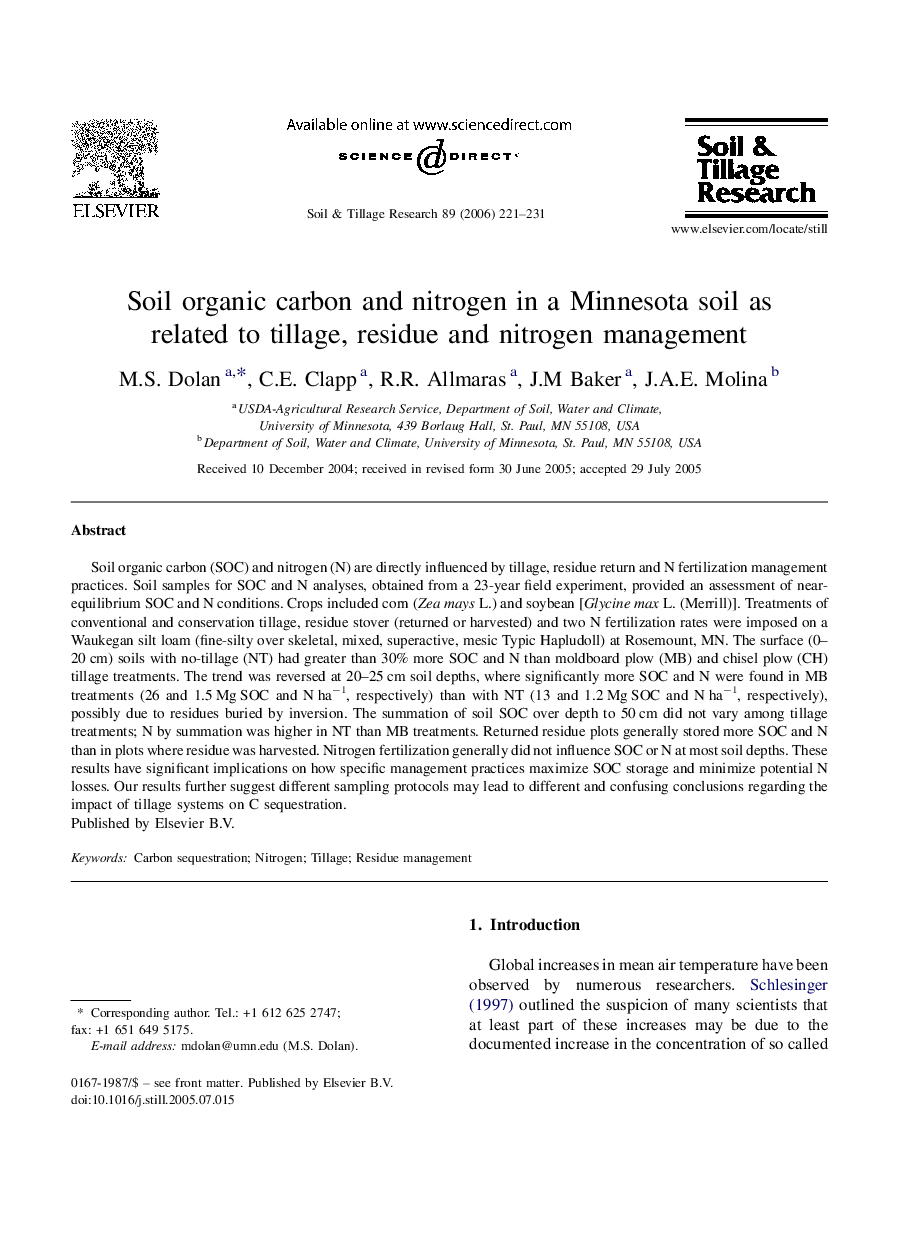| Article ID | Journal | Published Year | Pages | File Type |
|---|---|---|---|---|
| 306902 | Soil and Tillage Research | 2006 | 11 Pages |
Soil organic carbon (SOC) and nitrogen (N) are directly influenced by tillage, residue return and N fertilization management practices. Soil samples for SOC and N analyses, obtained from a 23-year field experiment, provided an assessment of near-equilibrium SOC and N conditions. Crops included corn (Zea mays L.) and soybean [Glycine max L. (Merrill)]. Treatments of conventional and conservation tillage, residue stover (returned or harvested) and two N fertilization rates were imposed on a Waukegan silt loam (fine-silty over skeletal, mixed, superactive, mesic Typic Hapludoll) at Rosemount, MN. The surface (0–20 cm) soils with no-tillage (NT) had greater than 30% more SOC and N than moldboard plow (MB) and chisel plow (CH) tillage treatments. The trend was reversed at 20–25 cm soil depths, where significantly more SOC and N were found in MB treatments (26 and 1.5 Mg SOC and N ha−1, respectively) than with NT (13 and 1.2 Mg SOC and N ha−1, respectively), possibly due to residues buried by inversion. The summation of soil SOC over depth to 50 cm did not vary among tillage treatments; N by summation was higher in NT than MB treatments. Returned residue plots generally stored more SOC and N than in plots where residue was harvested. Nitrogen fertilization generally did not influence SOC or N at most soil depths. These results have significant implications on how specific management practices maximize SOC storage and minimize potential N losses. Our results further suggest different sampling protocols may lead to different and confusing conclusions regarding the impact of tillage systems on C sequestration.
